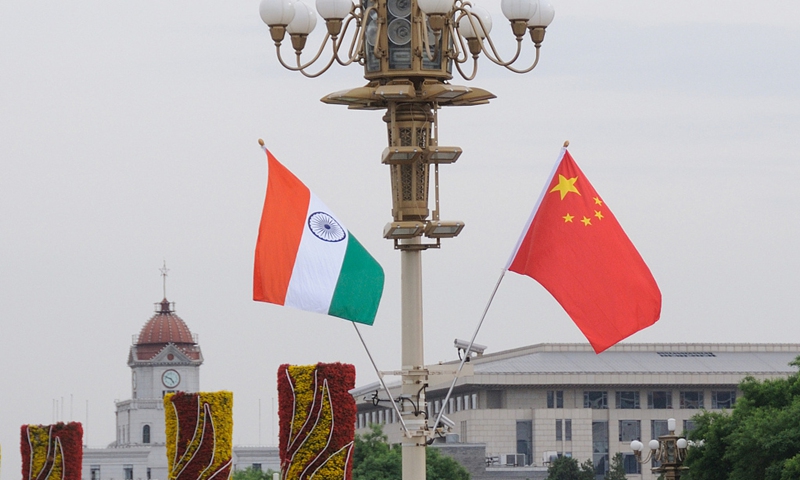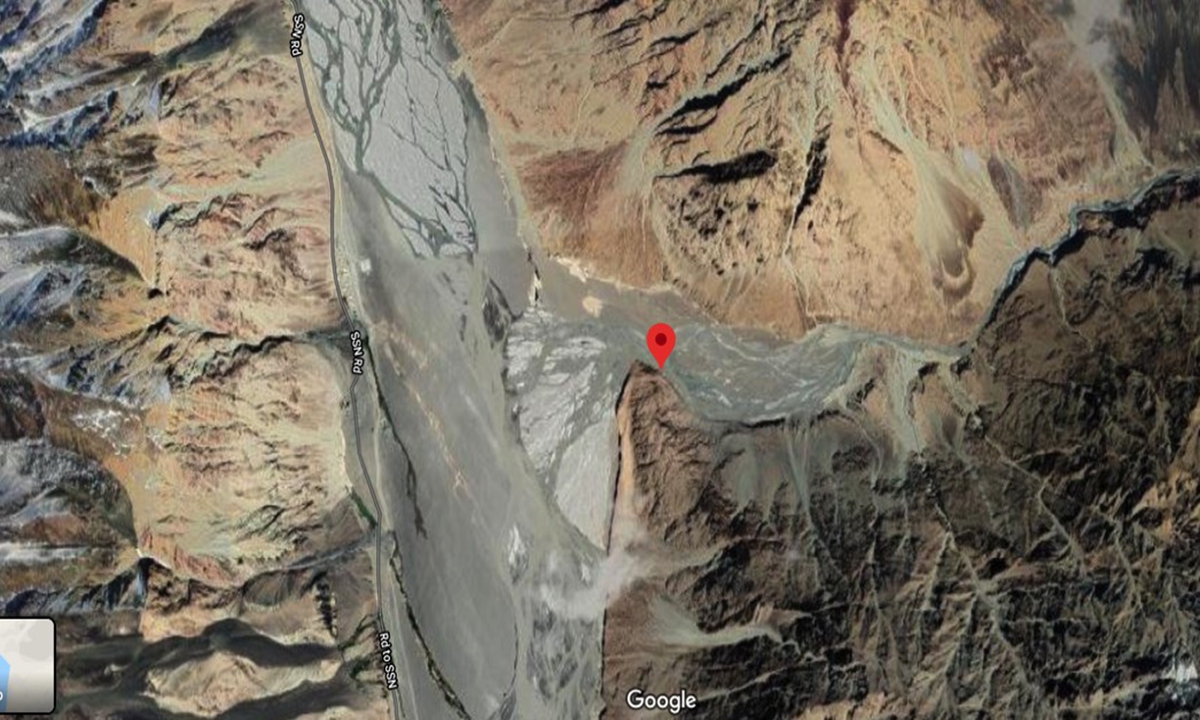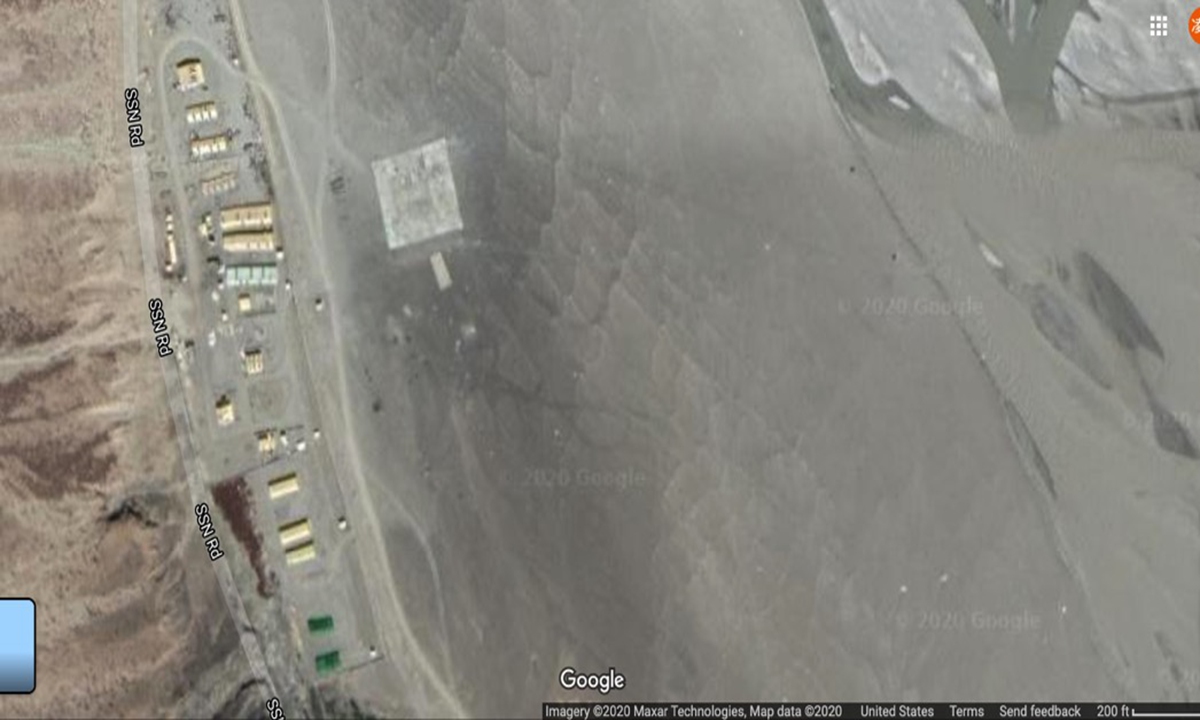India should be cautious about West instigation: analysts
By Cao Siqi, Liu Xuanzun and Fan Lingzhi Source:Global Times Published: 2020/6/18 22:08:40
India should be cautious about West instigation

Photo: VCG
The recent border clash, the biggest military confrontation between China and India in four decades that led to casualties on both sides, has brought the past flashpoint Galwan Valley into the spotlight.
After India blamed China for the clash by claiming the violent face-off was due to China's attempt to change the status quo in the area, and that the Indian army's activities were within the Indian side, Chinese experts stressed Thursday that China owns sovereignty over the area, and warned them not to be blind to history and mislead the public.
Whether judging from China's historic rights to the land and the Line of Actual Control, established to create a demarcation line and to ease tensions between the nations after the 1962 war, there is no dispute over the valley's sovereignty.
Observers also noted that India should be cautious about those countries that encourage confrontation, even or a fight between China and India, as they profit from strained China-India relations and maintain their hegemony.
No dispute
Chinese Foreign Ministry spokesperson Zhao Lijian said at Thursday's routine press briefing that the situation along the China-India border is stable and under control. The two sides agreed to ease the situation as soon as possible.
"Multiple accounts from the Qing Dynasty [1644-1911] and Western literature have recorded that the Galwan Valley was China's territory. Based on the principle of 'historic rights,' China has jurisdiction over the valley area," Zhang Yongpan, a research fellow of the Institute of Chinese Borderland Studies under the Chinese Academy of Social Sciences, told the Global Times on Thursday.
In nearby Shyok River in west Galwan River, India built an airport, constructed bridges, roads and villages. For years, the country has been seeking to break into Chinese land, Zhang said.
Zhang noted that the valley, which was also a flashpoint in the 1962 war, is of great strategic importance for both India and China. "Maybe India thinks it could provide abundant water resources and is an important channel connecting China and South Asia."
"India's actions in the region also suggest that it intends to strengthen its control over Ladakh and Kashmir. India's actions proved that it wants to enhance strength against Pakistan and China, and gain favorable geographical advantages," Zhang said.

Junction of Galwan River and Shyok River
A person close to the Galwan Valley told the Global Times that the area looks similar to the pictures of the Bangong Lake area, which is beautiful, but with a harsh natural environment.
Strong winds are very common, and vegetation is scarce. Cotton-padded clothes are needed during the day, and thicker clothes are needed at night.
The person said the area is sparsely populated, mostly Tibetans, and villages are often more than 100 kilometers apart.
A source familiar with the standoff told the Global Times on Thursday that Chinese side's military equipment was obviously superior, which is acknowledged also by the Indian troops.

Indian military camp on west side of the Shyok River. The square appears to be a helipad.
Dragon and elephant dance
India wants peace but is capable of giving a befitting reply if provoked, Prime Minister Narendra Modi said on Wednesday, his first comments on the border clash, Indian media reported.
Bali Ram Deepak, director of the Centre for Chinese and Southeast Asian Studies at Jawaharlal Nehru University in New Delhi, told the Global Times that Modi is indicating that India doesn't want escalation, but India can draw redlines as far as protecting territorial integrity is concerned.
Analysts said China and India do not want to repeat the Doklam standoff, but the West wants to be onlookers and instigators of the "dragon and elephant dance."
On Tuesday, Canadian Prime Minister Justin Trudeau spoke to Modi by phone, during which he discussed the situation at the Line of Actual Control, among other things, media reported.
Earlier, a US State Department spokesperson said, "We are closely monitoring the situation between Indian and Chinese forces along the Line of Actual Control."
Qian Feng, the director of the research department at the National Strategy Institute of Tsinghua University, warned that the clash adds a new reason for the US to sow discord between China and India, and draw India into confrontation with China.
Echoing Qian, Tian Shichen, vice president of think tank Grandview Institution, said this is an opportunity for the US to woo India and drive a wedge between China and India. But India has adopted a non-aligned policy, believing that it has more to gain from neutrality.
"India should be able to make its own decisions based on its own interests," Tian said.
In recent years, the Modi government has been pushed by its nationalism and drawn from the West, playing many tricks along the border. "But compared to the Indian military, Modi's statement is prudent, showing that he understands that peace is the mainstream of bilateral ties," Zhang said.
India has been sending reinforcements to the site, as military vehicles were spotted on Wednesday on their way to the border region of Ladakh, Berlin-based video news agency Ruptly reported on Wednesday.
Chinese experts said India's frontline troops are a force to be reckoned with, but India's military culture may hinder their combat capabilities, highlighted by their poor discipline, mixture of imported weapons and lackluster logistics support. This has been reflected in many accidents in the past, like the fatal fire that broke out on its aircraft carrier in 2019, and the submarine explosion in 2013.
Newspaper headline: Galwan Valley in the spotlight
RELATED ARTICLES: